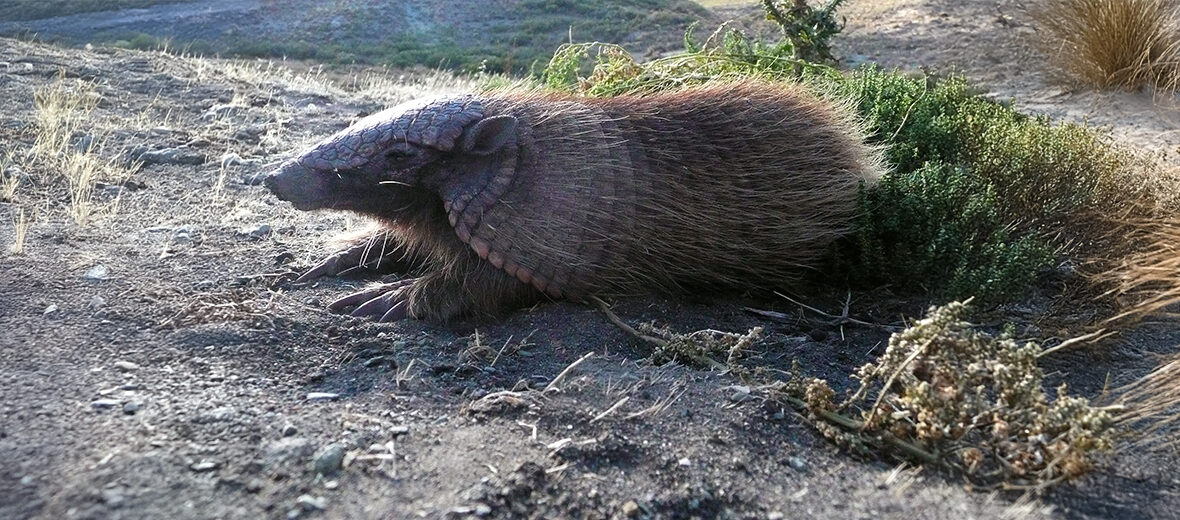
The screaming hairy armadillo, aka small screaming armadillo, crying armadillo, or small hairy armadillo, hails from the central and southern portions of South America. These armadillos face the threats of habitat loss and destruction at the hands of the logging and timber industry, mining, and quarrying; habitat division at the hands of roads and railroads, which can result in vehicle strike – being hit by vehicles; hunting; and trapping. However, they are abundant enough to be listed as Least Concern by the IUCN. Their population trend is listed as stable.
First the Stats…
Scientific name: Chaetophractus vellerosus
Weight: Up to 39.7 ounces
Length: Up to 16.5 inches, plus up to a 6.9 inch tail
Lifespan: Up to 9 years
Now on to the Facts!
1.) These critters were first described as “Dasypus vellerosus” by J. E. Gray in 1865 from a specimen in the British Museum collected from Santa Cruz de la Sierra in eastern Bolivia.
2.) Although questionable, there are 2 subspecies currently recognized C. v. vellerosus and C. v. pannosus.
3.) They are 1 of the smallest and most slender species of the genus Chaetophractus, however they have longer ears than others in their genus.
4.) These armadillos have more hair covering their body than other armadillo species.
5.) They have 18 bands of which 6 – 8 are movable.
But wait, there’s more on the screaming hairy armadillo!
6.) Screaming armadillos prefer a range of habitats, including: temperate shrublands, temperate grasslands, subtropical or tropical dry forests, dry shrublands, dry lowland grasslands, hot deserts, temperate deserts, arable lands, pasturelands, and plantations.
7.) These armadillos are nocturnal (active at night) during the summer months and diurnal (active during the day) during the winter months.
Did you know…?
The adjective “screaming” describes their propensity to squeal loudly when handled.
8.) They can go long periods of time without drinking standing water, getting their needed moisture from the foods they eat.
9.) Their burrows, while often sealed, measure up to 15 inches in diameter, and are several feet long/deep.
10.) Their burrows are not used for nesting, but rather just for shelter from predators.
But wait, there’s still more on the screaming hairy armadillo!
11.) Insects, mice, small rats, moles, voles, frogs, toads, lizards, birds, and various plants (especially the pods of Prosopis) make up their diet.
12.) Their carapace is particularly sought after for making charangos, a South American musical instrument like a lute (a stringed musical instrument with a pear-shaped body and a neck, often with a rounded back).
Did you know…?
A large amount of sand is ingested while feeding, and it may take up as much as 50% of the volume of their stomach at any given time.
13.) Females undergo up to a 75 day gestation (pregnancy) that yields up to 3 pups, but usually just 1 – 2 are birthed.
14.) Up to 2 litters are produced each year.
15.) These armadillos are heavily hunted for their meat in parts of the Chaco region in Bolivia.
Now a Short Screaming Hairy Armadillo Video!
Be sure to share & comment below! Also, check out the Critter Science YouTube channel. Videos added regularly!
Want to suggest a critter for me to write about? Let me know here.
Some source material acquired from: Wikipedia & IUCN
Photo credit: Arnaud Boucher




